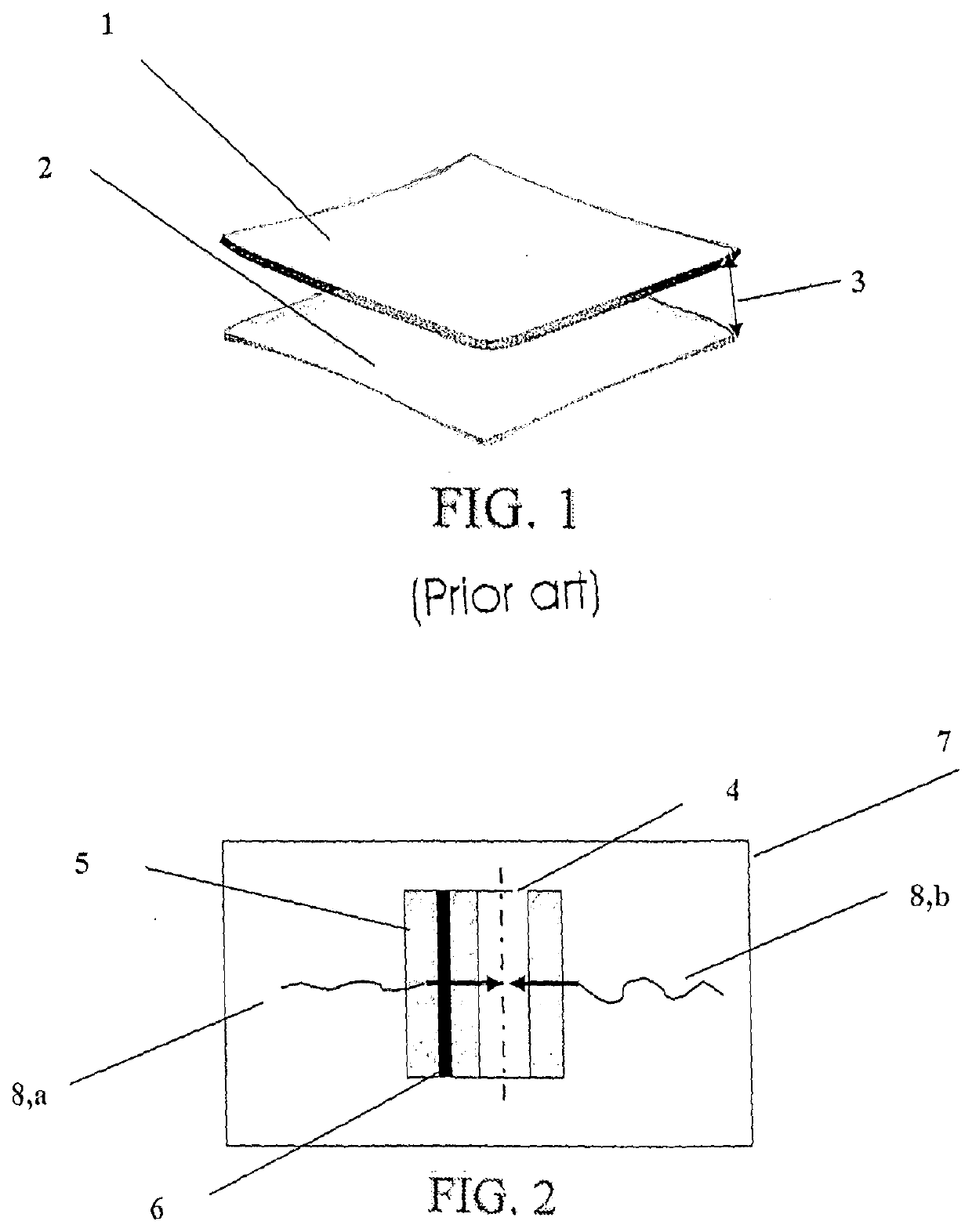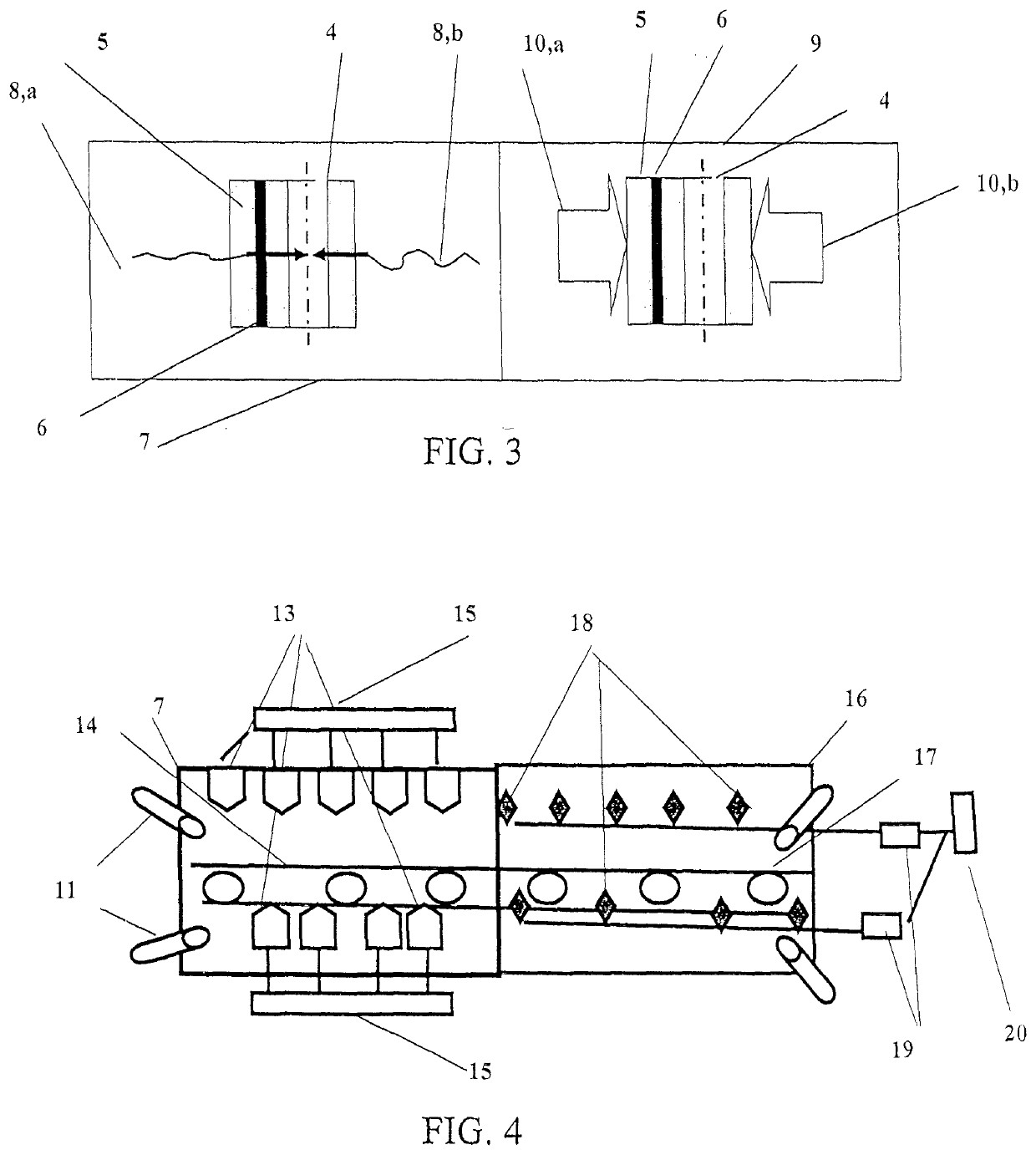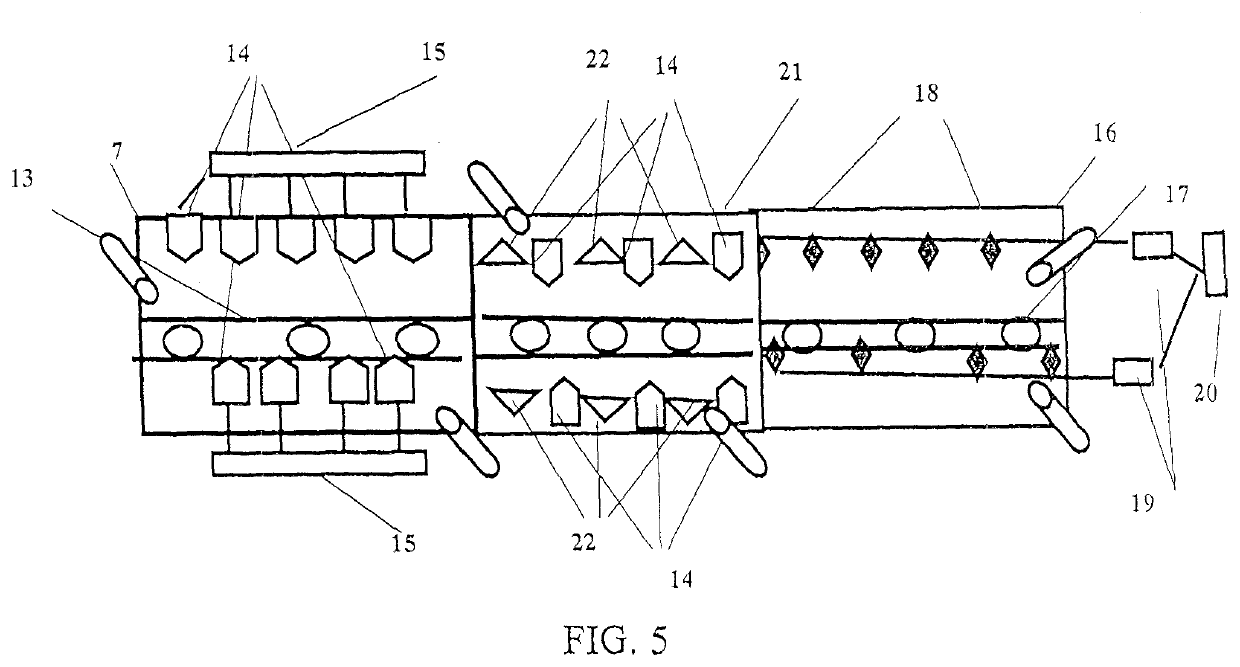A method of autoclave-free laminating
a technology of autoclave and laminating, applied in the direction of other domestic articles, protective equipment, protective garments, etc., can solve the problems of air trapped between the film and the glass surface, the rest of the air must be removed, so as to reduce manufacturing costs and increase production rate
- Summary
- Abstract
- Description
- Claims
- Application Information
AI Technical Summary
Benefits of technology
Problems solved by technology
Method used
Image
Examples
Embodiment Construction
[0028]The present invention relates to a method for laminating glass structures and other frangible material with the thermal treatment of a laminating film that can be processed by fast controlled heating without the required use of autoclave type furnaces. Products prepared using the method of the present invention include, but are not limited to VIG, solar panels, bulletproof, balustrades, and other safety glass, and like, also, architectural and vehicle glass, as well as, many other uses where the glass product must be strong. The present invention is generally applicable if the glass sheets have different thickness and have a low-E coating on the adjacent film surface. A multi-glass article structure can be also made by the method of the present invention.
[0029]The invented method comprises the assembly of a sandwich structure consisting of a functional part (4) (for example VIG) and one glass article (5) separated from the outer surface of the part (4) by a laminating film (6)...
PUM
| Property | Measurement | Unit |
|---|---|---|
| wavelength | aaaaa | aaaaa |
| wavelength | aaaaa | aaaaa |
| temperatures | aaaaa | aaaaa |
Abstract
Description
Claims
Application Information
 Login to View More
Login to View More - R&D
- Intellectual Property
- Life Sciences
- Materials
- Tech Scout
- Unparalleled Data Quality
- Higher Quality Content
- 60% Fewer Hallucinations
Browse by: Latest US Patents, China's latest patents, Technical Efficacy Thesaurus, Application Domain, Technology Topic, Popular Technical Reports.
© 2025 PatSnap. All rights reserved.Legal|Privacy policy|Modern Slavery Act Transparency Statement|Sitemap|About US| Contact US: help@patsnap.com



